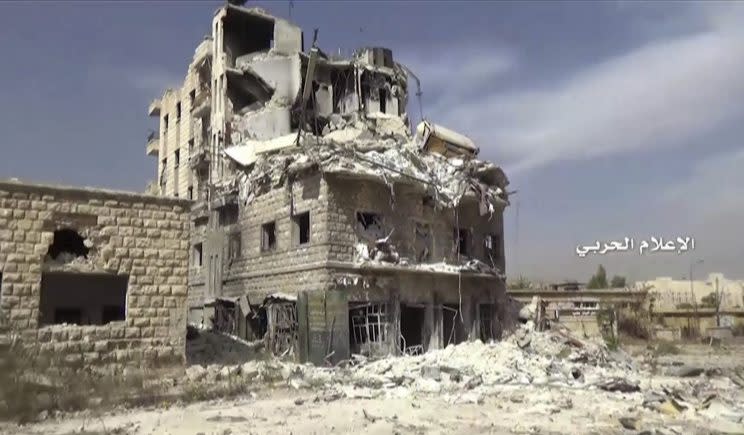Based on VP debate, U.S. will plunge deeper in Syria no matter who wins

Taking the vice presidential candidates at their word, the United States will plunge deeper into Syria’s bloody civil war no matter who wins in November.
Virginia Sen. Tim Kaine and Indiana Gov. Mike Pence agreed in their late Tuesday face-off on the need to carve out what the Republican called “safe zones” and the Democrat dubbed “humanitarian zones” in Syria. The purpose would be to protect civilians from an escalating conflict that is thought to have killed at least 400,000 people and driven millions from their homes, has fueled a refugee crisis in the region and in Europe, and has led to deadly Islamic State-inspired terrorist attacks in Europe and the U.S.
“The United States of America needs to be prepared to work with our allies in the region to create a route for safe passage and then to protect people in those areas, including with a no-fly zone,” said Pence, Donald Trump’s vice presidential pick.
“Hillary and I also agree [with] the establishment of humanitarian zones in northern Syria with the provision of international human aid,” said Kaine, Hillary Clinton’s running mate. The Democratic senator did not repeat Clinton’s frequent calls for a “no-fly zone” to protect civilians inside those areas, but it’s hard to imagine anyplace in Syria being described as “safe” if it were not protected from Bashar Assad’s Russia-backed air force.
Pence took that Syria policy a step further — and a step away from Trump — by saying that the U.S. “should be prepared to use military force to strike military targets of the Assad regime” in order to protect civilians in the rebel-held eastern section of the city of Aleppo. Kaine did not make a similar suggestion.
To many voters, the notion of imposing a no-fly zone might sound seductive. It relies on America’s overwhelming air superiority. The stated goal is defensive, not offensive — protecting civilians, not bringing about regime change. The idea already enjoys increasingly bipartisan congressional support, led by Republican Sen. John McCain of Arizona. And heartbreaking images as well as horrific reports from Aleppo may ramp up pressure on U.S. decision makers to act.
“I was not an original supporter when Sen. McCain raised the idea of a no-fly humanitarian zone in the fall of 2013,” Kaine said at a mid-September Senate Armed Services Committee hearing, citing the refugee crisis and potential extremist attacks. “I think we would’ve been wise to do it when Sen. McCain suggested it. And I think we would still be wise to do it.”
The potential resulting escalation in the U.S. role in Syria becomes clearer when officials have to answer the question of from whom, and how, the U.S. and its partners would keep a “safe zone” safe, and to what extent doing so would advance U.S. interests.
First, given that the so-called Islamic State lacks air power, a no-fly zone would necessarily apply to the Assad regime and to Russia, which entered the conflict in September 2015 to shore up its beleaguered client in Damascus. There’s no sign that Assad or his patrons in Moscow would sign on to such an arrangement, and President Obama has given no indication that he’s willing to risk a Russo-U.S. military clash in Syria.
Second, well before Russia joined the war and deployed advanced air defense systems in Syria, the Pentagon was warning that a no-fly zone would require significant resources, including the means to rescue pilots shot down while enforcing it and considerable sums of cash. A safe zone would also require ground troops for its defense.
“It’s always in our best interest to help protect civilians, but, again, I would not recommend a buffer zone at this point in time,” Gen. Lloyd Austin, head of the Central Command that overseas operations in the Middle East, told the Senate Armed Services Committee on Sept. 16. “It will take a ground force to be able to protect the refugees if we do that.”
On that issue, public opinion polls aren’t much help. While a thin majority of Americans have said for almost a year that they favor sending ground troops to Syria, it’s not to protect civilians from Assad or Russia, but to battle ISIS.




